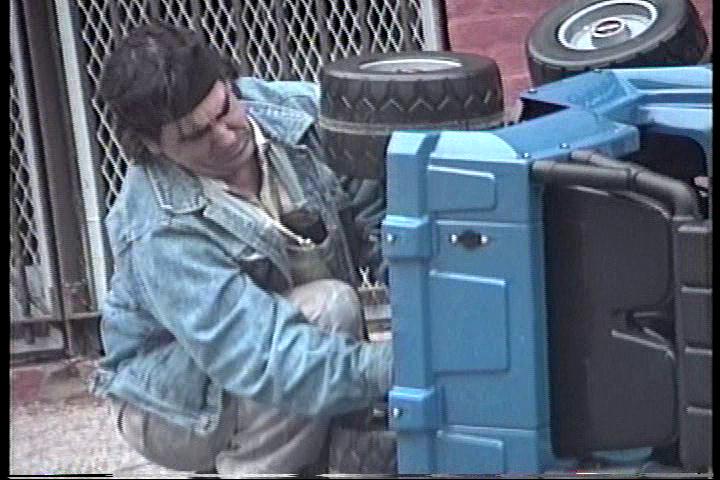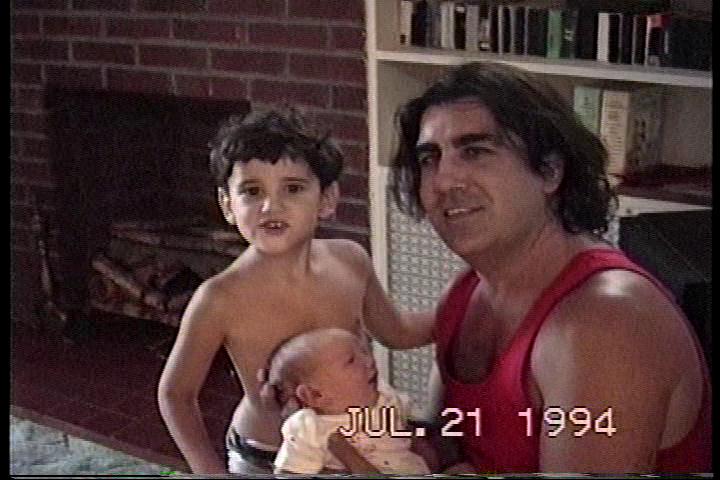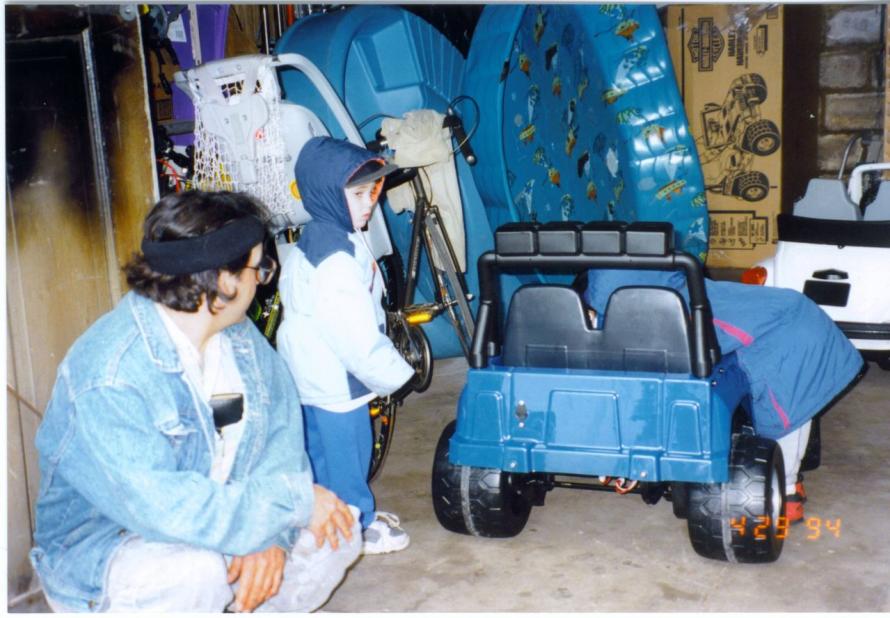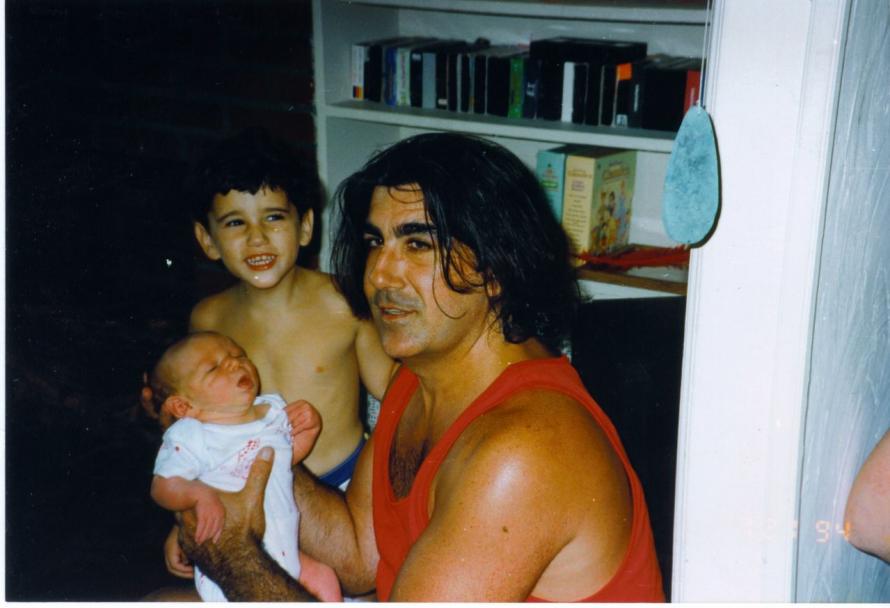Hi,
I have a dozen Hi8 tapes spanning roughly from 1990 through 2000. I have had them converted to DVD in the past (they were first converted to VHS years and years ago).
My questions are thus:
1) What can I do to help these videos last as long as possible? IE so let's say my great grandchildren can watch and enjoy them with video quality similar to whatever state they're in now?
2) Hi8's native aspect ratio is 4:3. Is there anyway to avoid the films being "aspect ratio'ed" to death in the future? What I mean is, I take it to understand that 16:9 is the general aspect ratio now, and on a 16:9 TV, the DVD transfers are letterboxed. I worry that say, in 50 years, if let's say 24:10 is the standard aspect ratio, that these old films will just be tiny, tiny boxes on a screen, not even watchable. Is this a realistic fear? And if so, is there anything that can be done to avoid it?
3) What tips, tricks, etc would you recommend to best preserve the films? I keep them in a leather bag, upright, in a closet. But, is there any way a person of low income such as myself can better preserve them? Are there any neat "tricks" to have them restored to look EXACTLY as when they were shot?
4) What would be the best medium, going forward, to transfer them to?
Try StreamFab Downloader and download from Netflix, Amazon, Youtube! Or Try DVDFab and copy Blu-rays! or rip iTunes movies!
+ Reply to Thread
Results 1 to 7 of 7
Thread
-
-
I'm not an expert but I'm on the same boat, so here's what I did.
I bought a digital8 camcorder able to digitize hi8 tapes, I took some time to transfer those tapes to a computer as DV-AVI files (this is as close to the original you can get for a reasonable time/effort investment), then I edited those files, and now they are stored on 2 different hard drives (and soon some M-discs), preserved for as long as I can keep those copies safe.
These DV-AVI files are now digital masters, I can convert them to any format needed, now or in the future.
Last year I used QTGMC to create cleaned and optimized MP4 files for computer playback, in 20 years I will create something else if needed.
You can keep the tapes in a dry cool place away from dust, they will degrade with time and so will the hardware able to play them. In the long run even if the tapes were perfectly preserved there will be nothing left to play them.
So my advice would be to digitize to DV-AVI now and worry about the rest later, a Digital8 camcorder able to do the transfer will cost you about 300$ to 400$ and you will need a firewire 400 card for a desktop pc, about 20$. -
See, the original masters have been played a total of around 5-6 times (One for VHS copy, several DVD copies). How well would you say they've held up? The following are screencaps of a DVD transfer, followed by photos taken the same day with a photo camera:


photos same days:


-
They seems to be fine, a bit of noise, but that's to be expected. Like I said the best way to preserve the original video and allow for some post processing in the future is the DV-AVI route. You can also rip your dvds or store an iso image on hard drives. That way the dvd version will last longer.
-
-
To convert your dvds to iso files you can use ImgBurn and use the Create image file from disc option. This will create a 4.7GB .iso file on your computer's hard drive. You will then be able to burn these files on new DVDs and keep them archived on a HDD. The only way to keep them for 100 years is to have many copies stored at different locations. This will preserve the dvd quality. You might also want to take a look at M-disc burners.
If you want to have smaller files to share you can use Handbrake to convert the dvds to MKV files, you will lose some quality but it might prove handy. Using handbrake will require some testing and efforts. In a nutshell you will need to double the framerate and preserve the aspect ratio. Don't deinterlace using handbrake, it's not very efficient for this kind of source. On that topic you better wait for another forum member to weight in.
edit : your hi8 tape is interlaced video, your dvd is most likely interlaced video.
You can use handbrake to produce an interlaced mkv or mp4 file, in that case set deinterlace to off and keep the framerate same as source. Your player might need to be set to deinterlace to play the video properly.
If you want to try to make a deinterlaced file, set deinterlace to slow and double the framerate.Last edited by ackboo; 5th Feb 2016 at 20:37.
-
Let me see if I can address your issues. Numbers refer to your post
3. The greatest risk, as with any tape format is light and heat. So they have to be stored away from direct light and in a cool (not too cold) place.
2. You are over-reacting. Much better that they are displayed as they are, even if tvs get wider, than crop and convert so lose detail.
1. No one can really answer this. You had the tapes converted to the format that was most appropriate at the time you did it. No one can tell you what will be appropriate for the distant future. Will dvd's still be around then ? Will computers be as we know them now ? Things have evolved and they will continue to evolve.
All you can really do if create multiple versions in different media and hope that one will still work.
As for formats, 12 tapes is not many and the cost/learning curve in making these copies might ne overwhelming - I sense this in what you already write. Take a look at local transfer companies, what they can offer and what they charge and take it from there.Last edited by DB83; 6th Feb 2016 at 09:43.
Similar Threads
-
Hi8 interlacing
By Event3horizon in forum RestorationReplies: 14Last Post: 2nd Aug 2014, 01:11 -
Can Hi8 distorted tapes recorded on 8mm camcorder, play on Hi8 camcorder?
By RebeccaJB in forum Newbie / General discussionsReplies: 7Last Post: 27th Jul 2014, 17:39 -
Help with Hi8 playback
By johnhudson922 in forum Camcorders (DV/HDV/AVCHD/HD)Replies: 19Last Post: 16th Aug 2012, 18:16 -
VHS/Hi8 to digital using ADVC110. Some questions.
By Jull in forum CapturingReplies: 9Last Post: 5th Jan 2012, 12:23 -
56 hours of Hi8 to digital project- two burning questions
By m_00 in forum CapturingReplies: 23Last Post: 6th Jul 2011, 14:27




 Quote
Quote